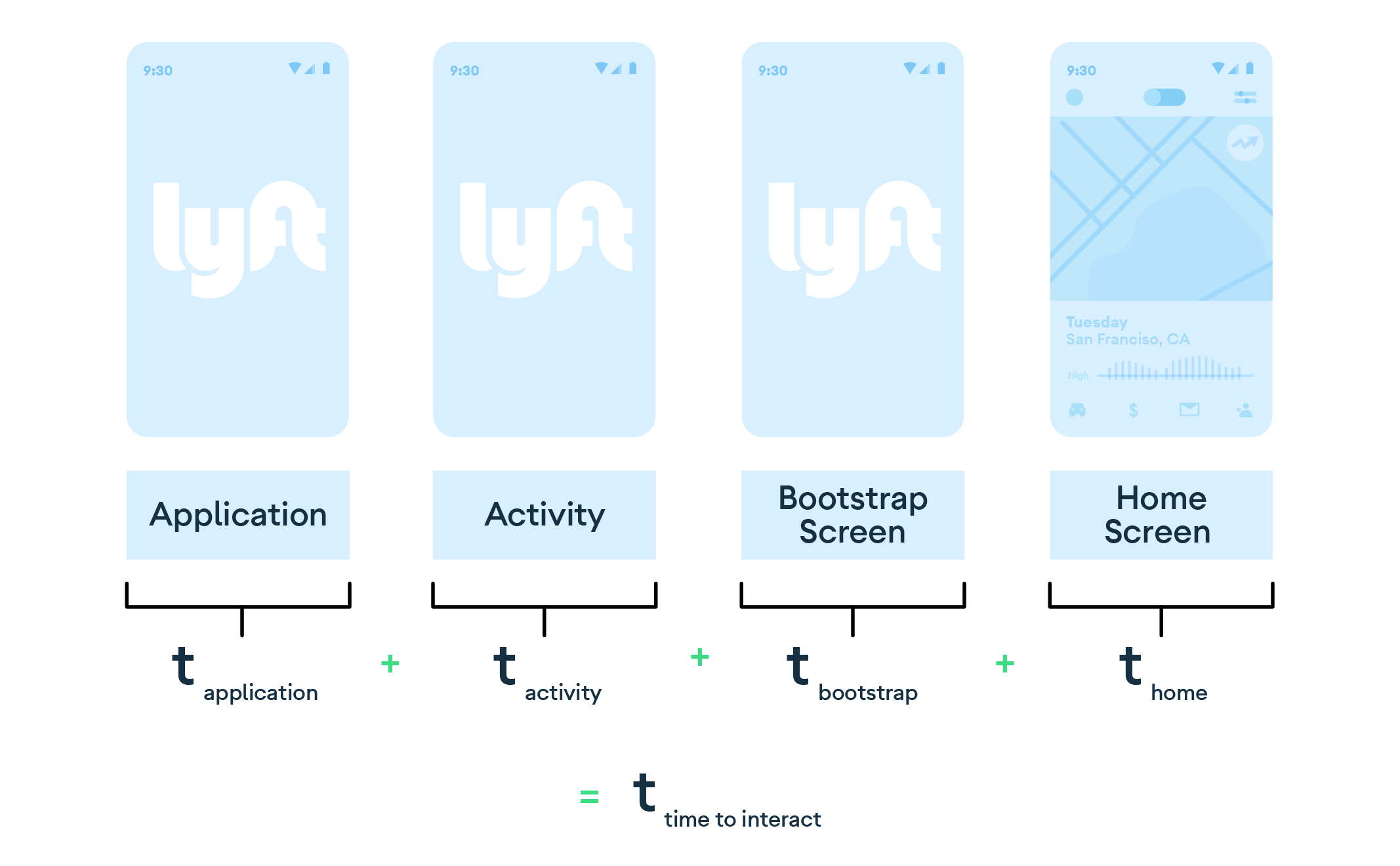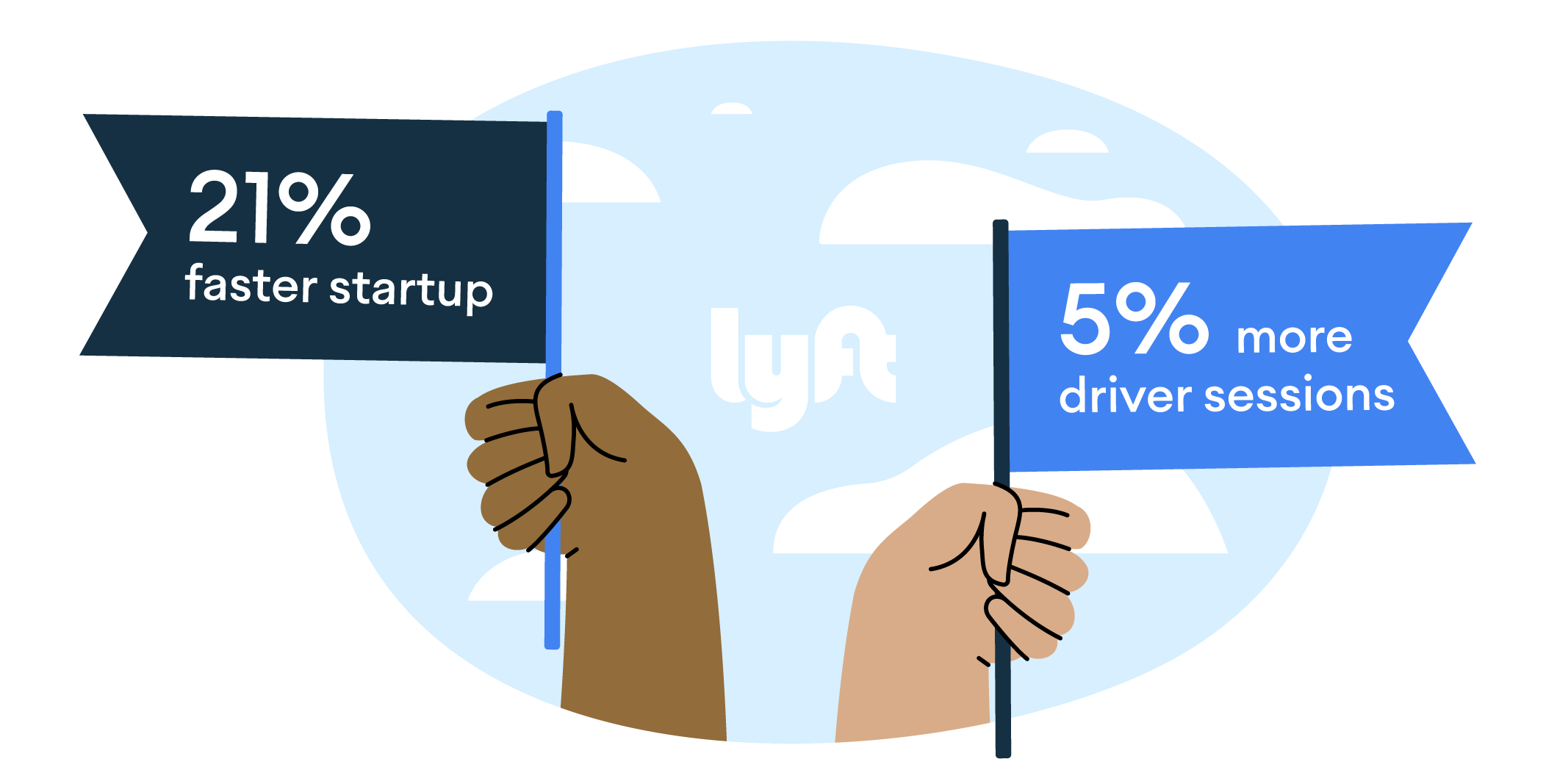
Lyft は、優れたアプリを提供するよう努めています。そうしなければなりません。ライドシェア アプリ(何百万人ものドライバーや乗客に毎日重要な時間的制約のあるサービスを提供する)の場合、低速または応答しないアプリが許容できない摩擦をもたらします。物事がスムーズに稼働し続けるために、Lyft の開発チームはアプリのパフォーマンスを注意深く観察しています。同社は、Android ドライバアプリの起動が遅いことに気づきました。
時間的制約のある優先事項が多すぎる組織では、すべてのプロジェクトを慎重に検討する必要があります。開発チームは、起動に時間がかかることがカスタマー エクスペリエンスに影響していることを把握していましたが、対策を講じるには、まず問題の範囲を上層部に説明する必要がありました。そのためには、明確なビジネスケースを作成する必要がありました。
実施内容
Lyft の開発チームは Android Vitals を使用して、ライドシェアリング分野の同等のアプリよりも、Lyft Driver の起動時間が 15 ~ 20% 遅いことを発見しました。これが、経営陣に主張をするために必要なことでした。
問題の範囲を集計し、たった 1 人の開発者が 1 か月働くことで、アプリの起動時間が大幅に短縮される可能性があると推定しました。経営陣が拒否できない、価値のある投資です。
経営陣の支援を受け、彼らは今やこの行き詰まり自体を見つける必要がありました。そして、アプリの起動プロセスを見直し、プロセスを複数のフェーズに分割しました。

アプリはスムーズに起動し、UI のレンダリングは期待どおりに進行しましたが、その後第 3 フェーズであるブートストラップ フェーズで、アプリがネットワークに接続し、ホーム画面をレンダリングするためのデータをリクエストすると、ボトルネックが見つかりました。
チームはこの事象を解決するために迅速に行動し、不要なネットワーク呼び出しの削除、非同期実行のための呼び出し、セッション間でのデータのキャッシュを行いました。
結果と知見
こうした比較的シンプルな改善により、アプリの起動時間が平均 21% 短縮され、ドライバー セッションが 5% 増加しました。最初のテストでは、アプリに適度な投資を行うだけで価値ある結果が得られることが証明されました。これを受けて、Lyft のリーダーはイニシアチブを拡大し、アプリの安定性を含む他の課題に対処することを約束しました。

Lyft が Android の Lyft Driver アプリをどのように改善したかに関する技術的な詳細については、Google の技術事例紹介をご覧ください。
Android Vitals と Google Play でのアプリの見つけやすさについて
- Google Play は、起動時間がアプリの品質にとって重要な決定要因であると考えています。
- プロダクト オーナーは Android Vitals を使用して、実際のデバイスにおけるアプリの主な指標の過去のパフォーマンスを把握し、追跡することができます。
- Google Play Console では、プロダクト オーナーは集計パフォーマンス データを同じカテゴリの他のアプリと比較することで、自社のアプリが最高水準に達しているかどうかを確認できます。
- Android Vitals を使用すると、アプリ応答なし(ANR)の発生率、クラッシュ発生率、レンダリング パフォーマンス、アプリの起動時間などの指標を比較できます。
- アプリの起動時間はユーザー エクスペリエンスの重要な指標です。起動が遅いアプリや反応しないアプリは、ユーザーをいらだたせたり、注意をそらしたりする可能性があります。

